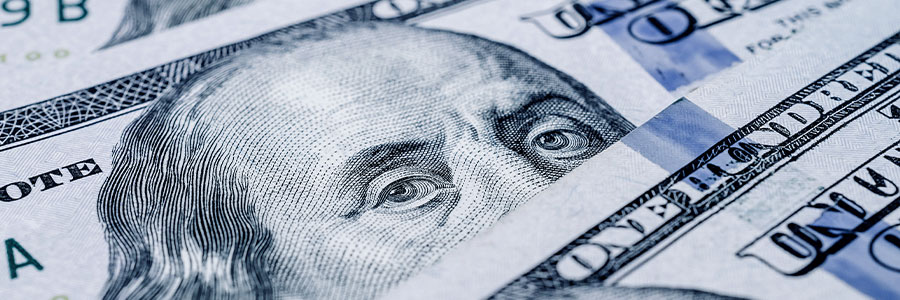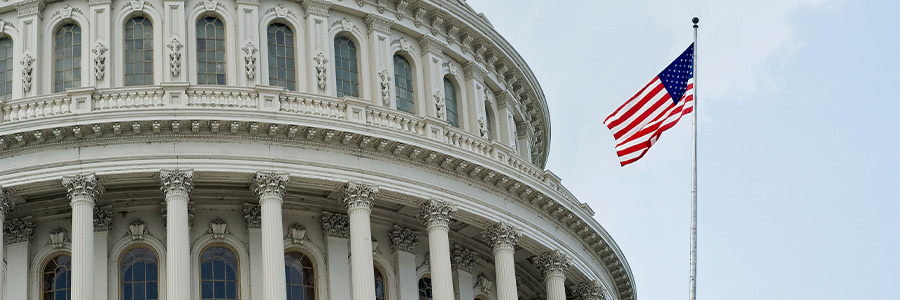New Fed Call: Boulevard of Broken Dreams
By: Oscar Munoz, Gennadiy Goldberg, Molly McGown
Apr. 22, 2024 - 4 minutes
The unexpectedly strong March Consumer Price Index (CPI) report proved to be disappointing, as we expected inflation to start providing broader signs of price normalization before the June Federal Open Market Committee (FOMC) meeting. That now seems highly unlikely, and we've pushed back our expectations for Fed easing this year.
March Inflation – Can You Take Me Higher
Consumer price inflation meaningfully exceeded consensus expectations in March, with the headline CPI advancing at another 0.4% m/m (0.378% before rounding; TD and consensus: 0.3%), as core price inflation registered a meaningful and unexpected increase.
The focus of the March CPI report remained centered on the core segment given its strong showing at the start of the year (particularly on services). Contrary to our expectations, core CPI inflation registered another gain at 0.4% m/m, with the unrounded figure coming in at 0.359%, significantly above our 0.26% projection as we were looking for more softness in the services segment. On the bright side, progress was made in rents inflation while core goods retreated more than we were forecasting. All in all, the core's three-month annualized rate continued to gain speed, rising three-tenths to 4.5% — its highest level since May 2023.
While we expect core Personal Consumption Expenditures (PCE) inflation in March to come in below the core CPI signal, it will likely still prove to be uncomfortably high for Fed officials (we expect it to print in the 0.25%-0.30% m/m range). Policymakers are likely to argue again for patience given the ongoing bumps in the core disinflation process amid an activity profile that allows them to wait for the data to speak. We remain of the view that the FOMC is aiming to ease policy this year.
Higher Bar for Rate Cuts
Persistently disappointing dynamics in consumer prices are likely to lead Fed officials to look for a larger accumulation of evidence that points to inflation normalization before deciding to pull the trigger on rate cuts. Indeed, given the importance of signalling the beginning of an easing cycle, the Fed is now likely to raise the bar regarding the evidence it wants to see before making that decision. And two reports of core PCE inflation in the vicinity of the 2% target on a m/m annualised rate basis aren't likely to be enough barring an unexpected deterioration of the labor market.
Following that premise, we do not only judge the June meeting now as highly unlikely to host a rate cut, but also the July meeting as too soon for the inflation data to meet that higher threshold. We now look for the Fed to first ease rates at its September FOMC meeting, as we forecast core PCE inflation to moderate by then to a monthly pace that is consistent with a return to the inflation target. Furthermore, given the FOMC's clear inclination to be very gradual when cutting rates (i.e., one 25bp rate cut per quarter), we now pencil in a second rate cut for the December FOMC meeting.
We continue to favor a gradual approach for the normalization of policy across 2025 and 2026, and now forecast four 25bp rate cuts per year with easing implemented at Summary of Economic Projects (SEP) meetings. We expect the upper bound of the Fed funds rate to end 2025 and 2026 at 4.00% and 3.00%, respectively.
Could the Fed Hike Again?
We remain of the view that the default hawkish policy response from Fed officials is to continue to postpone the start of the easing cycle. The bar for rate hikes is very high, and it would entail a clear and unsustainable re-acceleration in economic activity, endangering inflation expectations. We assign low probabilities to that scenario, and the main risk in our view is instead that inflation proves stubborn in returning toward 2% and remains sticky at around 2.5-3.0% for core PCE. We are far away from the 2020-2022 environment where both fiscal and monetary policy were clearly providing support to the economy. As the Fed has continuously reiterated, risks are two-sided now.
By pushing out the expected easing of nominal rates, the monetary policy stance will still become tighter even under a more gradual deceleration in consumer price inflation. The clear tightening of financial conditions that was seen post-CPI report is a testament to that view as well.
Subscribing clients can read the full report via the TD One Portal











